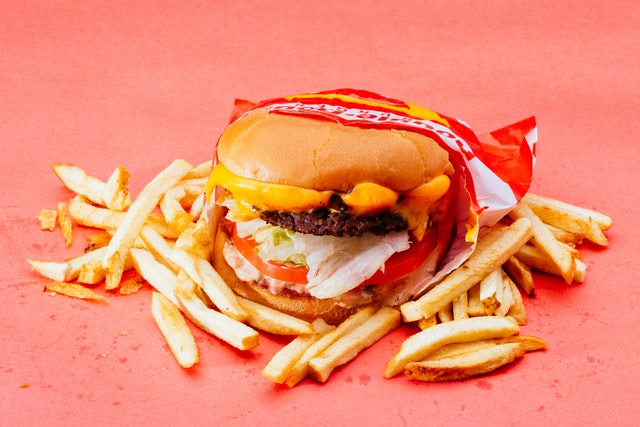The Rise and Future of Fast Food Culture: Convenience, Controversy & Change
Welcome to the World of Fast Food – More Than Just a Quick Bite
Fast food isn’t just about grabbing a burger on the go—it’s a reflection of how we live, work, and eat in today’s fast-paced world. From neon-lit drive-thrus to smartphone app orders, fast food culture has become a staple of modern life.
But have you ever stopped to think how it all began? Or how deeply it influences our health, environment, and daily habits?
Let’s take a flavorful journey through the story of fast food—its history, its highs and lows, and the fascinating future it’s cooking up.
A Quick History: Where Fast Food Really Began
The Birth of Speedy Service
Believe it or not, the roots of fast food go all the way back to the 1920s in the United States. The boom of cars brought along drive-in diners, and soon after, White Castle (founded in 1921) pioneered the model of consistent, affordable meals served fast.
But the game-changer? Ray Kroc’s vision for McDonald’s in the 1950s. By applying assembly-line efficiency to burgers and fries, he transformed a local diner into a global icon.
Fast Food Goes Global
By the 1980s, chains like McDonald’s, KFC, and Burger King had become household names—not just in the U.S., but across the globe. These brands adapted to local tastes: think Teriyaki Burgers in Japan, McPaneer in India, and rice bowls in Thailand.
Today, the golden arches are more recognized than some national flags!
Fast Food’s Impact on the Economy
Job Creator & Tax Contributor
It’s easy to overlook how big of an employer the fast food industry is. In the U.S. alone, it supports over 15 million jobs—from kitchen crew to marketing professionals. And let’s not forget the billions in tax revenue it generates.
Boosting Local Economies
Love it or hate it, a new fast food joint in town usually means jobs, foot traffic, and business for local suppliers. In many areas, especially urban or lower-income neighborhoods, these restaurants are often one of the few affordable dining options.
Fast Food and Family Life
Changing the Way Families Dine
Gone are the days when every family meal was home-cooked. With long commutes and hectic schedules, fast food offers a quick fix for hungry families. Whether it’s a mid-week dinner or a weekend outing, grabbing fast food has become a bonding ritual for many.
Happy Meals and play zones turned brands like McDonald’s into part of childhood memories—clever marketing, or cultural phenomenon?
A Marketing Powerhouse
Fast food chains know their audience. From colorful cartoon characters to celebrity influencer deals, they tailor their messaging to appeal across age groups.
Next time you see a limited-edition meal on Instagram, you’re witnessing modern fast food marketing in action.
Class, Culture & Perception
While fast food is often appreciated for being budget-friendly, it’s also caught in a complex debate around class and access to healthy food. Many lower-income communities rely on fast food simply because healthier options are unavailable or unaffordable.
This dual image—comforting yet controversial—is one of the most unique aspects of fast food culture.
Health Concerns: A Heavy Burden?
The Obesity Link
Let’s be honest—most classic fast food isn’t exactly a superfood. Burgers, fried items, sugary sodas—it’s a recipe for weight gain if consumed excessively. Rising obesity and diabetes rates, especially among youth, have triggered alarm bells globally.
Fast food’s affordability and high-calorie menus have made it a public health issue.
Industry Under Fire
Nutritionists and health advocates have criticized fast food giants for their aggressive advertising to kids and for selling meals with little nutritional value. But it’s not all doom and gloom.
Brands are now offering salads, grilled items, and clearer nutrition labeling to meet the growing demand for healthier choices.
Fast Food vs. The Environment
A Not-So-Green Legacy
Behind every burger is a chain of resource-heavy production: livestock farming, water usage, plastic packaging. It’s no surprise that the industry has been accused of contributing to deforestation, climate change, and plastic waste.
Greener Initiatives Are Emerging
Thankfully, many chains are stepping up. We’re seeing compostable packaging, plant-based menu items, and pledges to cut emissions.
Still, it’s a long road ahead. Would you choose a burger made sustainably if it cost a little more?
Shifting Tastes: The Modern Fast Food Consumer
Healthier, Cleaner, More Transparent
Today’s consumers—especially millennials and Gen Z—want more than just speed. They want quality, customization, and ethical sourcing.
Plant-based patties? Gluten-free buns? Organic wraps? Fast food chains are racing to meet the trend, proving that fast and healthy can go hand-in-hand.
Tech is Changing the Game
Ordering from a mobile app, picking up without even rolling down your window, or scanning a QR code for the menu—these aren’t futuristic features; they’re today’s standard.
AI is even being used to predict popular orders during peak hours. Wild, right?
The Road Ahead: What’s Next for Fast Food?
Customization is King
We’re moving toward a “build-your-own” model—think Chipotle or Subway—where customers feel more in control of what’s on their plate.
People want food that fits their lifestyle, whether it’s keto, vegan, high-protein, or low-carb.
Challenges Remain
Despite progress, fast food still faces serious challenges: fighting health stigmas, reducing environmental harm, and staying competitive in a saturated market.
But innovation is key—and the ones that evolve will thrive.
Final Thoughts: What Does Fast Food Mean to You?
Fast food isn’t just a type of meal. It’s a mirror reflecting how we live, what we value, and where we’re heading.
It’s quick, accessible, and familiar—but also tied to issues like health, sustainability, and equity. As consumers become more mindful, the industry is changing—not disappearing.
So next time you grab that burger or bowl, ask yourself:
Is it just a meal—or a sign of something bigger?


